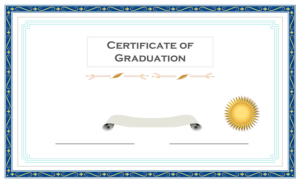Navigating Global University Policies: Simplify, Understand, Engage
In today's globalized education landscape, harmonizing university regulations and policies across borders is crucial for fairness and accessibility. Standardization facilitates collaborations, exchange programs, and joint research, enriching the…….

In today's globalized education landscape, harmonizing university regulations and policies across borders is crucial for fairness and accessibility. Standardization facilitates collaborations, exchange programs, and joint research, enriching the educational experience worldwide. Simplifying complex policy language through plain writing enhances understanding and engagement. Digital tools streamline management, ensuring easy access and transparency. Comprehending these regulations equips students with tools for academic success and fosters a culture of responsibility and integrity.
In today’s globalized academic landscape, understanding university regulations and policies across borders is paramount. This article explores the intricate process of translating these essential documents for universities worldwide. We delve into strategies like global harmonization, simplifying complex language, and leveraging digital tools to enhance accessibility. Additionally, cultural considerations, discipline-specific accuracy, and student perspectives are scrutinized, offering a comprehensive guide to navigating university regulations on an international scale.
- Global Harmonization of University Policies
- Simplifying Complex Regulatory Language
- Accessing and Interpreting University Guidelines
- Cultural Considerations in Policy Translation
- Ensuring Accuracy Across Disciplines
- Digital Tools for Efficient Regulation Management
- Student Perspective: Understanding University Rules
Global Harmonization of University Policies
In today’s globalized educational landscape, the harmonization of university regulations and policies has become increasingly important. As institutions of higher learning expand their reach internationally, students and faculty from diverse backgrounds seek consistent standards and practices across borders. This trend towards standardization aims to create a level playing field for all participants, ensuring fairness and accessibility in the world of academia.
Global efforts focus on aligning key policy areas such as student admissions, academic integrity, and dispute resolution procedures. By adopting common frameworks, universities worldwide can facilitate international collaborations, exchange programs, and joint research initiatives. This harmonization not only streamlines administrative processes but also fosters a sense of unity among institutions, enriching the overall educational experience for students and contributing to the global dissemination of knowledge.
Simplifying Complex Regulatory Language
University regulations and policies often present a complex web of terms and conditions, which can be challenging for students and staff alike to navigate. Simplifying this language is a critical step in ensuring that everyone involved understands their rights and responsibilities. Many institutions are now employing more accessible and reader-friendly approaches, using plain language instead of legal jargon, to make these documents easier to comprehend.
This shift towards clarity is not only beneficial for users but also serves as a powerful tool for engagement. By simplifying university regulations and policies, educational establishments can foster a sense of inclusivity and encourage active participation from all stakeholders. It empowers students to make informed decisions regarding their academic pursuits and ensures that faculty members are aligned with the institution’s guidelines, creating a more cohesive learning environment.
Accessing and Interpreting University Guidelines
Accessing university regulations and policies is a crucial first step for any student, faculty member, or staff. Most institutions make their guidelines readily available online, often through dedicated websites or portals that house essential documents. These platforms ensure easy access to University Regulations and Policies, allowing users to browse and search specific rules and procedures.
Interpretation of these guidelines can be a complex task due to varying language and legal frameworks across countries. It’s important for individuals to carefully read and understand the context behind each policy, considering cultural differences and local laws. Consulting with academic advisors or relevant department heads can also clarify ambiguous points, ensuring everyone operates within the university’s established parameters.
Cultural Considerations in Policy Translation
When translating university regulations and policies for an international audience, cultural considerations are paramount. Each country has its own unique social norms, values, and legal frameworks that shape educational institutions. A direct translation may not capture the nuanced meaning or intent behind the original text. For instance, what is considered acceptable discipline in one culture might differ significantly from another.
Therefore, a thorough understanding of local customs and laws is essential to ensure the translated policies resonate with and are enforceable within the target university community. Expert translators who specialize in academic documentation should be engaged to navigate these complexities. They can adapt language and structures while preserving the integrity of the original University Regulations and Policies, fostering a sense of inclusion and fairness among students and faculty from diverse cultural backgrounds.
Ensuring Accuracy Across Disciplines
Ensuring accuracy across disciplines is paramount when translating university regulations and policies for global institutions. This involves a meticulous process where language experts collaborate with academic professionals to maintain the intended meaning and context. Each discipline, whether it’s science, arts, or engineering, has its unique terminology and conceptual frameworks, demanding translators who possess subject-specific knowledge.
The challenge lies in translating not just words but also ideas and academic nuances accurately. It requires a deep understanding of the source material to convey complex regulations and policies in a way that resonates across diverse cultural and educational landscapes, upholding the integrity of the university’s guidelines for all students and faculty worldwide.
Digital Tools for Efficient Regulation Management
In today’s digital era, universities worldwide are leveraging technology to streamline regulation and policy management. Digital tools offer efficient, accessible solutions for handling complex University Regulations and Policies. These platforms enable easy storage, quick retrieval, and transparent sharing of critical documents, enhancing communication between administration, faculty, and students.
Through user-friendly interfaces, stakeholders can efficiently navigate and contribute to policy updates, ensuring everyone operates under the most current guidelines. This digital approach not only reduces paperwork but also facilitates global collaboration, allowing institutions to learn from each other’s best practices in regulation management.
Student Perspective: Understanding University Rules
Students arriving at universities worldwide often find themselves navigating a complex web of university regulations and policies, which can be both exciting and daunting. From attendance rules to academic integrity guidelines, these rules are designed to create a fair and supportive learning environment. Understanding university regulations isn’t just about avoiding penalties; it empowers students to make informed decisions that enhance their academic journey.
For instance, knowing the expectations around plagiarism ensures students appreciate the importance of proper citation and original thought. Similarly, familiarizing oneself with attendance policies can help students plan their time effectively, ensuring they stay on track without unnecessary disruptions. Embracing these regulations as tools for success fosters a culture of responsibility and academic integrity within the student community.
University regulations and policies, while essential for institutional order, can be complex and varied worldwide. Through global harmonization efforts, simplification of language, and leveraging digital tools, universities are enhancing accessibility and interpretability of these guidelines. Cultural considerations remain paramount to ensure fairness and inclusivity. Accurate, discipline-specific translation is crucial for students navigating the academic landscape. By embracing innovative solutions, institutions can empower students to understand and uphold university rules effectively.






